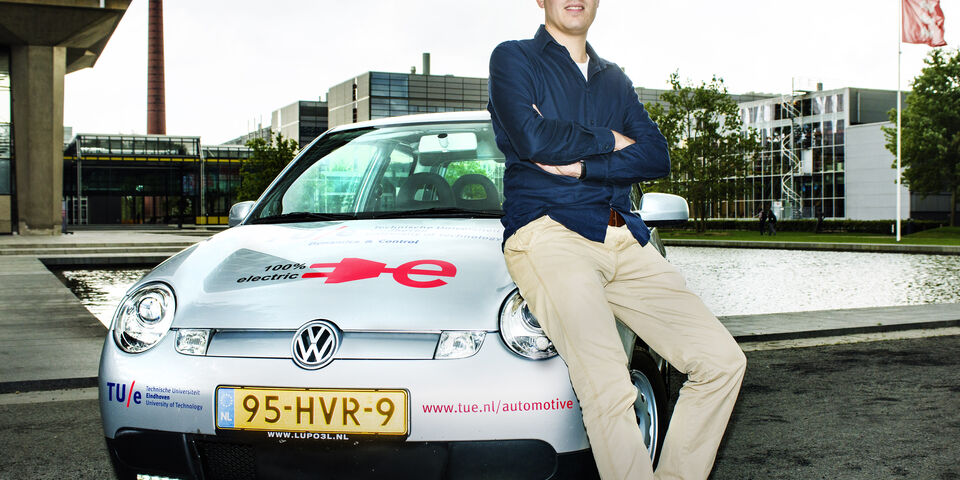Home Stretch | One-pedal driving
Braking with the gas pedal. In electric cars this is the way to save energy. Regenerative braking means you can give brake energy back to the battery. Newly graduated engineer Joost van Boekel searched for the optimal combination of efficiency and brake feel for that one pedal on which everything hinges.
Van Boekel’s study object was the Lupo EL, a conventional Volkswagen Lupo 3L which several years back was converted into a super-economical test vehicle in the TU/e Automotive lab. “The Lupo had been functioning very well for a number of years”, says the new engineer. “That’s why in principle I could not change anything about the hardware.” In modern cars there is fortunately a great deal you can change without needing a screwdriver or a soldering bolt. By connecting a laptop to the board computer, a push on a key allows you to determine what happens when you press the gas pedal, for instance. It is even possible to use the motor to brake the car so hard when you release the pedal, that in most cases the real brake is superfluous: that is called one-pedal-driving.”
“Only in case of a genuine emergency stop do you need the real brake pedal”, says Van Boekel. “In principle you can decelerate by 4 m/s2 in a Lupo by using the motor to brake.” That is nearly half a ‘g’ – enough for a serious brake action, and is even too strong to do so by means of the gas pedal. This is why Van Boekel reduced the braking force of the ‘gas-brake pedal’ to half that value. He made the braking force of the car dependent on the speed: on the motorway you don’t want to cause a pile-up when you release the pedal too much unintentionally. At speeds of some fifty kilometers per hour the braking force is maximal – enough to brake rapidly for someone coming from the right within the built-up area.
In order to make driving as economical as possible – the chief goal of his final project - Van Boekel programed a relatively broad range in the pedal position (between the gas section and the brake section) in which the motor does nothing at all, and the car rolls on without using any energy. The effect of his one-pedal-drive-system: within the built-up area the Lupo is 7% more economical than the same car without one-pedal-drive. Moreover, the Lupo no longer ‘crawls’ when you release the brake from a standstill – a familiar and annoying phenomenon in (electric) automatics.
Van Boekel admits that his solution is not revolutionary. While many electric cars already largely use the motor to brake, in his experience it is actually only the BMW i3 which exceeds the driving convenience and pedal feel of the Lupo EL. “Of course, the BMW comes with many millions of research costs under the bonnet.”
Anyway, his project has not gone unnoticed. A reporter from the Volkskrant tested the Lupo and wrote a big story about it, and Van Boekel was a guest at BNR Nieuwsradio and Radio 1, where he explained the principle. Perhaps that publicity will come in handy in his search for a job. Although he would really prefer to go to Germany – the pre-eminent country for cars. “I did a traineeship at Daimler’s in Stuttgart, and I rather liked the German way of life.”


Discussion